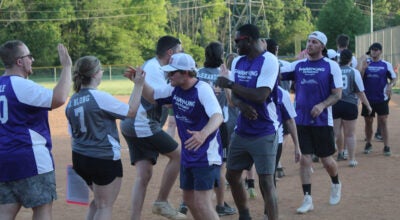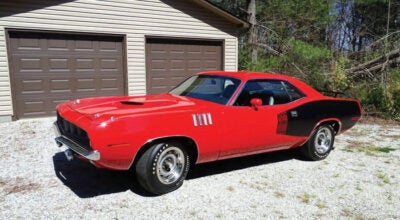N.C. Transportation Museum presents Blue Ridge Parkway program
Published 12:00 am Tuesday, December 1, 2009
SPENCER ó The N.C. Transportation Museum and the N.C. Humanities Council will showcase the history of one of the most traveled roads in North Carolina during a program beginning at 1 p.m. on Aug. 8, a Saturday.
This program, titled “Super-Scenic Motorway: The Blue Ridge Parkway Nobody Knows,” features author Anne Mitchell Whisnant.
The writer’s presentation will detail how the 469-mile parkway was planned and built. Whisnant explodes commonly held beliefs that the beauty of the mountains guided construction, the parkway was solely a New Deal program meant to employ poor mountain residents and that such a route would be impossible to create today.
Beginning construction in 1930s, National Parks officials envisioned the parkway as a way to increase auto tourism between two national parks ó the Shenandoah National Park in Virginia and the Great Smoky Mountains National Park in North Carolina and Tennessee.
While common myth says the parkway was built without conflict, Whisnant outlines a different story. The parkway crosses 469 miles through 29 counties, affecting some 5,000 adjoining landowners. All the land for the road had to be purchased by North Carolina and Virginia. Land purchases were worked out individually with those owning land along the route, but many disagreed with the way the project was carried out.
Some landowners objected as the parkway bisected their properties, even writing letters to President Franklin Roosevelt. One resident from Ashe County complained that National Parks officials “have ruined my spring and take all of my wood. … We aren’t allowed to put any buildings near (the parkway) and not even to cross it to our land on the other side.”
But while landowners may have had little effect on the road’s construction, the voices of business owners and developers were heard and their objections heeded. Former N.C. Supreme Court Justice Heriot Clarkson was able to use his political connections and a team of lawyers to have the parkway right of way narrowed through his Little Switzerland development.
Grandfather Mountain owner Hugh Morton’s impact on the parkway was also widely felt. Morton conducted a media campaign that portrayed National Parks Service officials as trying to ruin Grandfather Mountain, his development and the newly opened swinging bridge. The campaign was successful, eventually forcing a change in the planned route.
For five years, Cherokee Indian leaders also resisted selling reservation lands to be used as a right of way for the Blue Ridge Parkway.
Whisnant says there was a vision behind the building of the Blue Ridge Parkway, but the design was not just about landscape architecture and natural beauty. “It’s also about the kinds of battles and power that people adjoining it had to shape the look of the road and that has affected what we see at many spots,” she says.
Whisnant also details what she calls a “crisis in funding and support” for the Blue Ridge Parkway. She says action is needed now if the Blue Ridge Parkway will be available to travelers in the future.
Whisnant has enjoyed a love of the Blue Ridge Mountains since her youth, nurtured by seven summers spent at Lake Junaluska United Methodist Assembly. The Alabama native received her graduate degree at the University of North Carolina at Chapel Hill. While researching her planned dissertation on the history of birth control, Whisnant found information on Cherokee opposition to the Blue Ridge Parkway. The discovery led to more research and her dissertation topic changed to a focus on the parkway. Whisnant turned that dissertation into a book, “Super-Scenic Motorway: A Blue Ridge History.”
Books will be available for signing following Whisnant’s talk at the N.C. Transportation Museum, 411 S. Salisbury Ave.





